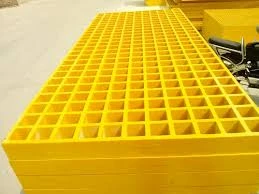loading...
- No. 9, Xingyuan South Street, Dongwaihuan Road, Zaoqiang County, Hengshui, Hebei, China
- admin@zjcomposites.com
- +86 15097380338
- Welcome to visit our website!
Exploring the Impact of Group Structures on Team Performance and Dynamics
Understanding GRP Structures A Comprehensive Overview
Glass Reinforced Plastic (GRP), also known as fiberglass, is a composite material that combines a polymer matrix with glass fibers to enhance its mechanical properties. GRP structures are widely used across various industries due to their unique characteristics, which include high strength-to-weight ratios, excellent corrosion resistance, and versatility in design and application. This article delves into the salient features of GRP structures, their manufacturing processes, applications, and advantages.
1. Characteristics of GRP Structures
One of the most prominent characteristics of GRP structures is their lightweight nature. Compared to traditional materials like steel or concrete, GRP is significantly lighter, which not only eases transportation but also reduces the overall load on supporting frameworks. This is particularly beneficial in applications where minimizing weight is crucial, such as in marine vessels and aerospace components.
Moreover, GRP possesses inherent resistance to chemicals, UV radiation, and moisture. This makes GRP structures ideal for environments that expose materials to harsh conditions, such as chemical processing plants, offshore platforms, and wastewater treatment facilities. The longevity and durability of GRP structures contribute to lower maintenance costs and increased efficiency over time.
The production of GRP structures can be accomplished through various methods, each suited for different applications. The most common techniques include hand lay-up, spray-up, and filament winding.
- Hand Lay-Up This is one of the simplest and most widely used methods. In this process, layers of glass fiber sheets are arranged and saturated with resin by hand. This allows precise control over the thickness and orientation of the fibers, making it ideal for custom applications. - Spray-Up Similar to hand lay-up, the spray-up method involves spraying a mixture of resin and chopped glass fibers onto a mold. This technique is faster than hand lay-up, making it suitable for larger parts where speed is essential.
- Filament Winding In this process, continuous glass fibers are wound around a rotating mandrel, coated with resin. This method is often used for producing cylindrical structures like pipes and tanks, as it allows for precise control over fiber placement and orientation.
Each of these methods has its own advantages, and the choice of technique largely depends on the specific requirements of the finished product, including strength, surface finish, and cost considerations.
grp structures

3. Applications of GRP Structures
The versatility of GRP structures enables their use across a wide array of industries. Common applications include
- Construction GRP is used for various construction components, including roofing, wall panels, and gratings, aiding in both structural and aesthetic solutions.
- Marine The marine industry extensively uses GRP for boat hulls, decks, and other components due to its resistance to moisture and corrosion, making it ideal for prolonged exposure to water.
- Automotive In the automotive sector, GRP is utilized for body panels and components, helping to reduce vehicle weight and improve fuel efficiency.
- Aerospace The aerospace industry leverages GRP in crafting lightweight components that do not compromise strength, contributing to superior performance and efficiency.
4. Advantages of GRP Structures
The advantages of GRP structures make them an increasingly popular choice in various applications. Their resistance to corrosion extends the lifespan of products, making them economical in the long run. Additionally, the lightweight nature of GRP facilitates easier handling and installation, ultimately leading to reduced labor costs.
Moreover, GRP structures can be molded into complex shapes, allowing for greater design flexibility. This adaptability fosters innovation in product design, enabling engineers to create solutions tailored to specific needs.
In conclusion, the emergence of GRP structures marks a significant evolution in material science and engineering. With their unique properties and wide-ranging applications, GRP structures offer substantial benefits across industries. As technology continues to advance, it is likely that the use of GRP will expand further, paving the way for new innovations and applications that capitalize on the strengths of this remarkable composite material.
-
The Rise of FRP Profiles: Strong, Lightweight, and Built to LastNewsJul.14,2025
-
SMC Panel Tanks: A Modern Water Storage Solution for All EnvironmentsNewsJul.14,2025
-
GRP Grating: A Modern Solution for Safe and Durable Access SystemsNewsJul.14,2025
-
Galvanized Steel Water Tanks: Durable, Reliable, and Ready for UseNewsJul.14,2025
-
FRP Mini Mesh Grating: The Safer, Smarter Flooring SolutionNewsJul.14,2025
-
Exploring FRP Vessels: Durable Solutions for Modern Fluid HandlingNewsJul.14,2025
-
GRP Structures: The Future of Lightweight, High-Performance EngineeringNewsJun.20,2025
